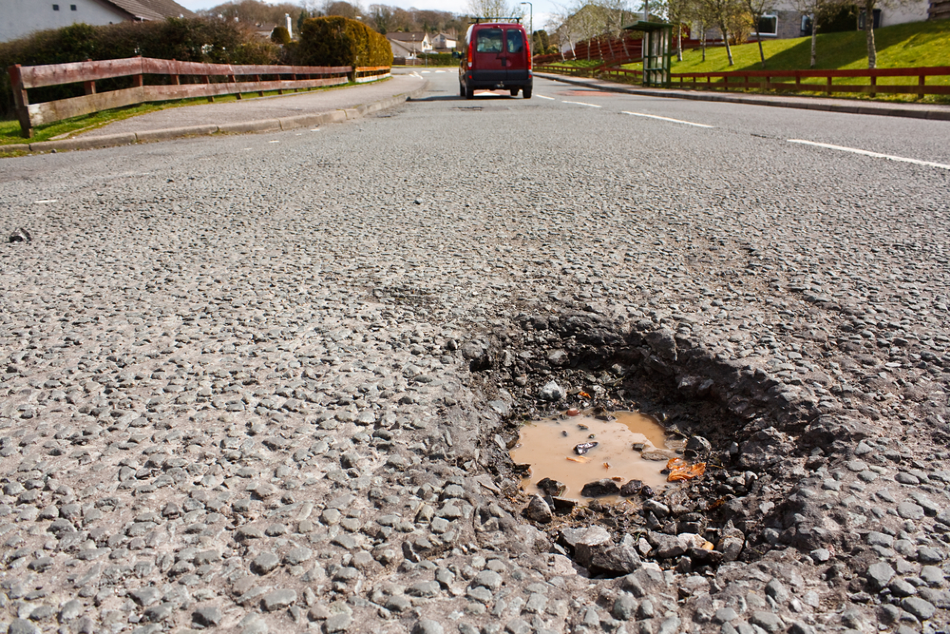
Image Credit: stocksolutions/Shutterstock.com
The degradation of concrete constructions and the resulting need for regular maintenance and repair has driven interest in methods to better protect concrete, particularly from the negative impacts of water and precipitation.
One approach to protecting concrete to extend its lifetime and lower maintenance costs has been the application of surface protection materials. These materials are hydrophobic and block the penetration of damaging chloride ions found in community water supplies.
Concrete surface treatments generally fall into three different categories:
- Coatings that establish a continuous film on top of a concrete surface
- The use of a coating to ‘impregnate’ soluble surface constituents to create a protective barrier
- The ‘hydrophobic impregnation’ of surface constituents to make water-repellent concrete
Existing coating materials have shown varying degrees of effectiveness. There currently is no single coating that is capable of protecting all kinds of concrete from deterioration.
Graphene Oxide and its Use as a Surface Protection Material
Concrete researchers have recently focused on using nanomaterials to develop superior coating materials. In particular, graphene oxide, produced by the chemical exfoliation of graphite, has emerged as a promising candidate.
Due to the superior mechanical properties conveyed by its high surface area and strength, as well as its excellent dispersibility in water, graphene oxide appears to be an excellent candidate for the surface protection of concrete.
There has been an increasing number of studies on the use of graphene oxide in construction materials to enhance their performances. Interest in the material has partly grown because it is cheaper to produce than comparable carbon nanomaterials such as carbon nanotubes and carbon nanofibers.
Preventing Water and Ion Penetration
In one recent study, researchers looked at the protective effect of a graphene oxide coating on concrete, focusing on its ability to prevent water and ions penetration.
To apply a 9 mg layer of graphene oxide on concrete samples, the study team used three application methods: brushing, spraying and submerging.
Researchers evaluated 90-day old samples for water absorption, capillary absorption and water vapor permeability. They also performed Fourier-transform infrared spectroscopy (FTIR) to assess any molecular changes, and a rapid chloride permeability test (RCPT) to evaluate the degree of corrosion due to chloride penetration.
A scanning electron microscope (SEM) was used to assess the quality of coatings on sample surfaces, and a zeta potential analysis was conducted to determine any changes to sample surfaces.
According to water absorption and permeability tests, graphene oxide coatings reduced the volumetric and capillary intake of water by concrete specimens by approximately 40% and 57%, respectively.
The researchers found that when the graphene oxide content of a surface rises, both the volumetric and capillary absorption of concrete was lower. FTIR evaluation of graphene oxide-coated samples did not show that chemical bonding occurred. Test coatings did not affect water vapor permeability, but graphene oxide lowered chloride ion permeability to approximately 25%.
The study team said its outcomes indicated the potential for graphene oxide as a next-generation surface protection material for concrete, particularly for structures in hostile conditions.
Incorporating Graphene Oxide into Concrete
In addition to being investigated as a protective concrete coating, graphene oxide is also being studied as a potential concrete additive. Research has shown the incorporation of graphene oxide conveys superior mechanical strength and greater durability.
In general, nanomaterials have one significant negative aspect as a concrete additive: poor dispersibility. However, the oxidative functionalities of graphene oxide caused it to disperse more readily in water than any other nanomaterial.
Visualizing Metrology and Potholes in Building Materials
The big drawback of adding graphene oxide to cement-based materials is a decreased workability as a result of its relatively large surface area that tends to absorb water. It also has a cumbersome lateral size that has a significant capacity for water retention.
Despite these disadvantages, the inclusion of a small amount of graphene oxide (approximately 1% by weight of cement) has been proven to enhance the compressive strength. Furthermore, the use of .05% graphene oxide has been shown to increase the compressive and flexural strength of concrete.
A recent study focused specifically on the inclusion of graphene oxide in concrete composites, with natural fine and coarse aggregate [1]. The study discovered that the incorporation of graphene oxide, with varying percentage content, can decrease workability but considerably boost compressive strength (21 to 55%) and tensile strength (16 to 38%).
Initial surface absorption and sorptivity were also found to diminish as graphene oxide content was increased in concrete samples.
The study team performed a cost analysis that found a .06% inclusion of graphene oxide is the best possible mix for maximum strength achieved on 90-day old samples.
References and Further Reading
- S.C. Devi. and R.A. Khan. (2020) Effect of graphene oxide on mechanical and durability performance of concrete. Journal of Building Engineering. Available at: https://doi.org/10.1016/j.jobe.2019.101007
Disclaimer: The views expressed here are those of the author expressed in their private capacity and do not necessarily represent the views of AZoM.com Limited T/A AZoNetwork the owner and operator of this website. This disclaimer forms part of the Terms and conditions of use of this website.